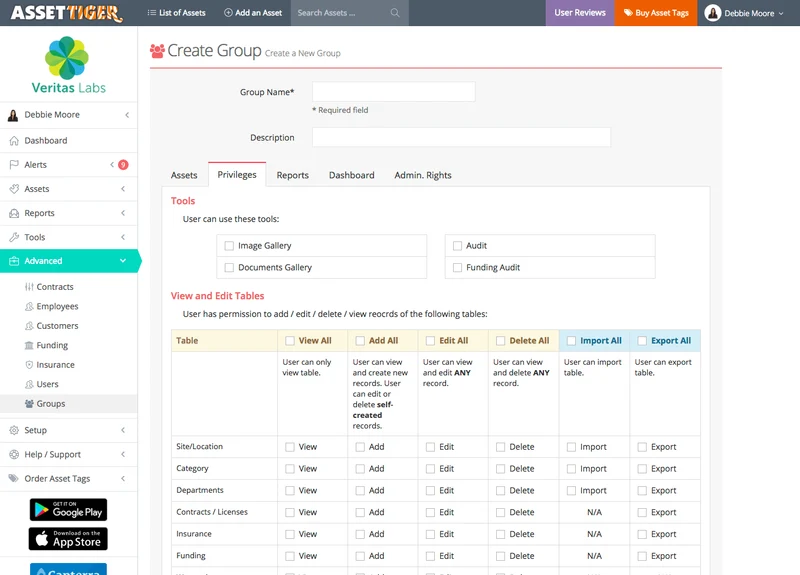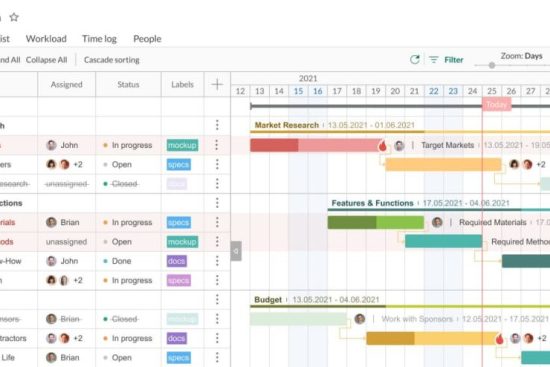
Managing assets is crucial for any organization. Open source software offers a flexible and cost-effective solution.
Asset management involves keeping track of company assets, from computers to machinery. Open source software has become popular for this purpose. It provides transparency, customization, and community support. Businesses of all sizes are adopting these solutions. They appreciate the cost savings and adaptability.
In this blog post, we will explore some of the best asset management software that is open source. You will learn how these tools can streamline your operations. Ready to dive in? Let’s explore the top options available for your needs.
Introduction To Asset Management Software
Explore the best open source asset management software for efficient tracking and managing of assets. Improve productivity and reduce costs with easy-to-use solutions. Discover tools tailored to your organization’s needs.
Asset management software helps businesses track and manage their assets. These assets include equipment, buildings, and inventory. The software provides a centralized system. This system helps in monitoring and maintaining assets. It also ensures efficient use of resources.Importance Of Asset Management
Effective asset management is crucial for any business. It helps in reducing costs. It also improves operational efficiency. Tracking assets manually can be time-consuming. It can also lead to errors. Asset management software automates this process. This automation saves time and reduces mistakes. Proper management extends the life of assets. It also ensures they perform at their best. Regular maintenance schedules are easier to follow with the software. This leads to fewer breakdowns and lower maintenance costs. Businesses can also better plan for future needs. Accurate data helps in making informed decisions.Benefits Of Open Source Solutions
Open source asset management software offers many advantages. It is usually free to use. This makes it cost-effective. Businesses can save on software expenses. They can also allocate funds to other important areas. Customization is another benefit. Open source software allows for modifications. Businesses can tailor the software to their specific needs. This flexibility ensures the software fits their processes perfectly. Open source solutions also have strong community support. Users and developers contribute to its improvement. This leads to frequent updates and new features. Bugs are quickly identified and fixed. This results in a more reliable software solution. “`Key Features To Look For
Choosing the best asset management software open source can be challenging. It’s important to know the key features that make a difference. These features ensure your assets are managed efficiently and effectively. Here are some essential features to consider.
Inventory Tracking
Inventory tracking is crucial. It helps keep track of all assets. This feature allows you to know what you have at any time. It reduces the risk of losing assets. You can also avoid over-purchasing. The system should provide real-time updates. This ensures accurate and current information.
Maintenance Scheduling
Maintenance scheduling is another important feature. It helps you plan and track maintenance activities. Regular maintenance keeps your assets in good condition. It prevents unexpected breakdowns. This feature should allow automatic reminders. You can schedule tasks based on usage or time. This ensures that maintenance is never missed.
Asset Lifecycle Management
Asset lifecycle management tracks an asset from acquisition to disposal. It helps in making informed decisions. You can plan for replacements and upgrades. This feature provides insights into asset performance. It also helps in budgeting and forecasting. Proper lifecycle management extends the life of your assets. It also ensures optimal use of resources.
Top Open Source Asset Management Software
Managing assets efficiently is crucial for businesses of all sizes. Open source asset management software offers a cost-effective way to track and manage assets. These tools provide flexibility, customization, and community support. Let’s explore some of the top open source asset management software options.
Openmaint
OpenMAINT is a comprehensive open source asset management tool. It helps manage buildings, systems, and maintenance activities. The software supports asset inventory, maintenance management, and logistics. Users can track assets, schedule maintenance, and manage work orders. OpenMAINT provides detailed reports for better decision-making. It is suitable for businesses of all sizes.
Snipe-it
Snipe-IT is another popular open source asset management software. It is designed for IT asset management. Users can track hardware, software, and licenses. Snipe-IT offers features like asset check-in/check-out, barcode generation, and detailed asset history. The software has a user-friendly interface and is easy to set up. It is ideal for small to medium-sized businesses.
Odoo
Odoo is a versatile open source asset management solution. It offers a range of business applications, including asset management. Users can manage assets, schedule maintenance, and track depreciation. Odoo integrates with other business modules like accounting and HR. The software is highly customizable and scalable. It is suitable for businesses of all sizes and industries.

Credit: www.goodfirms.co
Comparing Open Source Options
When selecting the best asset management software, open-source options provide flexibility and customization. This section will compare popular open-source solutions to help you choose the right one for your needs.
Feature Comparison
Different open-source asset management software comes with various features. Here is a table to make it easier to compare:
| Software | Key Features |
|---|---|
| Software A |
|
| Software B |
|
| Software C |
|
User Experience
User experience is crucial in choosing the right software. Here’s a brief overview:
- Software A: User-friendly interface, suitable for beginners.
- Software B: More advanced features, steeper learning curve.
- Software C: Balanced interface, good for both beginners and advanced users.
Community Support
Community support can make a huge difference in troubleshooting and development:
- Software A: Active community forums and extensive documentation.
- Software B: Regular updates and a dedicated support team.
- Software C: Large user base with many online resources.
Choosing the best open-source asset management software depends on your specific needs. Consider the features, user experience, and community support for each option.
Implementation Tips
Choosing the best asset management software open source is a crucial decision. Proper implementation ensures that you get the most from your software. Below are some tips for a smooth setup, efficient data migration, and effective training and support.
Initial Setup
The initial setup is the foundation of your asset management system. Follow these steps:
- Download the software from the official website.
- Check system requirements to ensure compatibility.
- Install the software on your server or chosen platform.
- Configure basic settings like user roles and permissions.
Ensure that your IT team is involved during this phase. They can troubleshoot any technical issues that arise.
Data Migration
Moving data from your old system to the new one is critical. Here are steps to follow:
- Export data from your old system in a compatible format.
- Clean the data to remove duplicates and errors.
- Import the cleaned data into the new software.
- Verify the data to ensure it is accurate and complete.
Consider using data migration tools that come with the software. They can simplify the process and reduce errors.
Training And Support
Training your team is vital for successful implementation. Create a training plan that includes:
- Introduction to the software interface.
- Basic functions and features.
- Advanced tools for power users.
Ongoing support is also essential. Ensure you have access to:
- Online documentation and tutorials.
- Community forums and user groups.
- Customer support for troubleshooting.
Regular training sessions can help keep your team updated on new features and best practices.

Credit: www.quidlo.com
Case Studies
Case studies provide a glimpse into the real-world application of asset management software. They show how businesses, both big and small, benefit from using open-source solutions. Let’s explore some success stories.
Small Business Success Stories
Small businesses often struggle with managing their assets due to limited resources. Open-source asset management software can be a game-changer for them.
Take a local bakery, for example. They needed a way to track their equipment, ingredients, and deliveries. They turned to an open-source solution. The software helped them keep track of everything without spending much. Their efficiency improved, and waste reduced significantly.
Another case involves a startup tech company. They used open-source asset management to manage their computers and hardware. This system helped them track usage, schedule maintenance, and plan for upgrades. It led to better asset utilization and cost savings.
Enterprise-level Implementations
Large enterprises have complex asset management needs. Open-source software can offer the flexibility and scalability they require.
Consider a multinational manufacturing company. They implemented an open-source asset management solution to oversee their global operations. The software allowed them to manage their machinery, tools, and parts across multiple locations. This unified system led to improved uptime and reduced operational costs.
Another example is a large healthcare network. They used open-source software to track medical equipment and supplies across various hospitals. This system ensured timely maintenance and optimal use of resources. As a result, they saw an increase in equipment lifespan and a decrease in downtime.
Future Trends In Asset Management
The world of asset management is evolving rapidly. With technological advancements, open-source asset management software is becoming more sophisticated. The future trends in this field promise to transform how organizations manage their assets. Let’s explore two key trends: AI and Automation and IoT Integration.
Ai And Automation
AI and automation are reshaping asset management. These technologies reduce manual tasks, improving efficiency. Imagine a system that predicts maintenance needs before issues arise. This proactive approach minimizes downtime and extends asset life.
Using AI, asset management software can analyze large datasets. It identifies patterns and trends, providing valuable insights. These insights help in making informed decisions. Automation further streamlines processes, from asset tracking to inventory management.
Here are some benefits of AI and automation in asset management:
- Predictive Maintenance: Anticipate problems and schedule timely repairs.
- Data Analysis: Gain insights from vast amounts of data.
- Process Automation: Automate routine tasks to save time.
Iot Integration
The Internet of Things (IoT) is another game-changer in asset management. IoT devices collect and transmit real-time data. This data offers a comprehensive view of asset performance and status.
Integrating IoT with asset management software enhances asset monitoring. You can track location, usage, and condition in real-time. This visibility helps in making quick and accurate decisions.
Here are some advantages of IoT integration:
- Real-Time Monitoring: Keep track of asset status continuously.
- Enhanced Decision Making: Use real-time data for better decisions.
- Improved Asset Utilization: Optimize the use of assets.
Both AI and IoT are set to revolutionize asset management. They offer efficiency, accuracy, and proactive management. Embracing these trends will keep your asset management strategies future-ready.

Credit: pangea.ai
Frequently Asked Questions
What Is Asset Management Software?
Asset management software helps organizations manage and track their assets. It ensures efficient use and maintenance of assets.
Why Choose Open Source Asset Management Software?
Open source software is cost-effective and customizable. It offers flexibility and community support for continuous improvement.
How Does Asset Management Software Improve Productivity?
It streamlines asset tracking, maintenance, and utilization. This reduces downtime and enhances operational efficiency.
Is Open Source Software Secure?
Yes, open source software is secure. It benefits from community scrutiny and regular updates to fix vulnerabilities.
Conclusion
Choosing the right asset management software can be a game-changer. Open source options offer flexibility and cost savings. They are reliable and customizable. You can find a tool that fits your needs and budget. These solutions help improve efficiency and organization.
Explore the options and see which works best for you. Start managing your assets smarter today.

